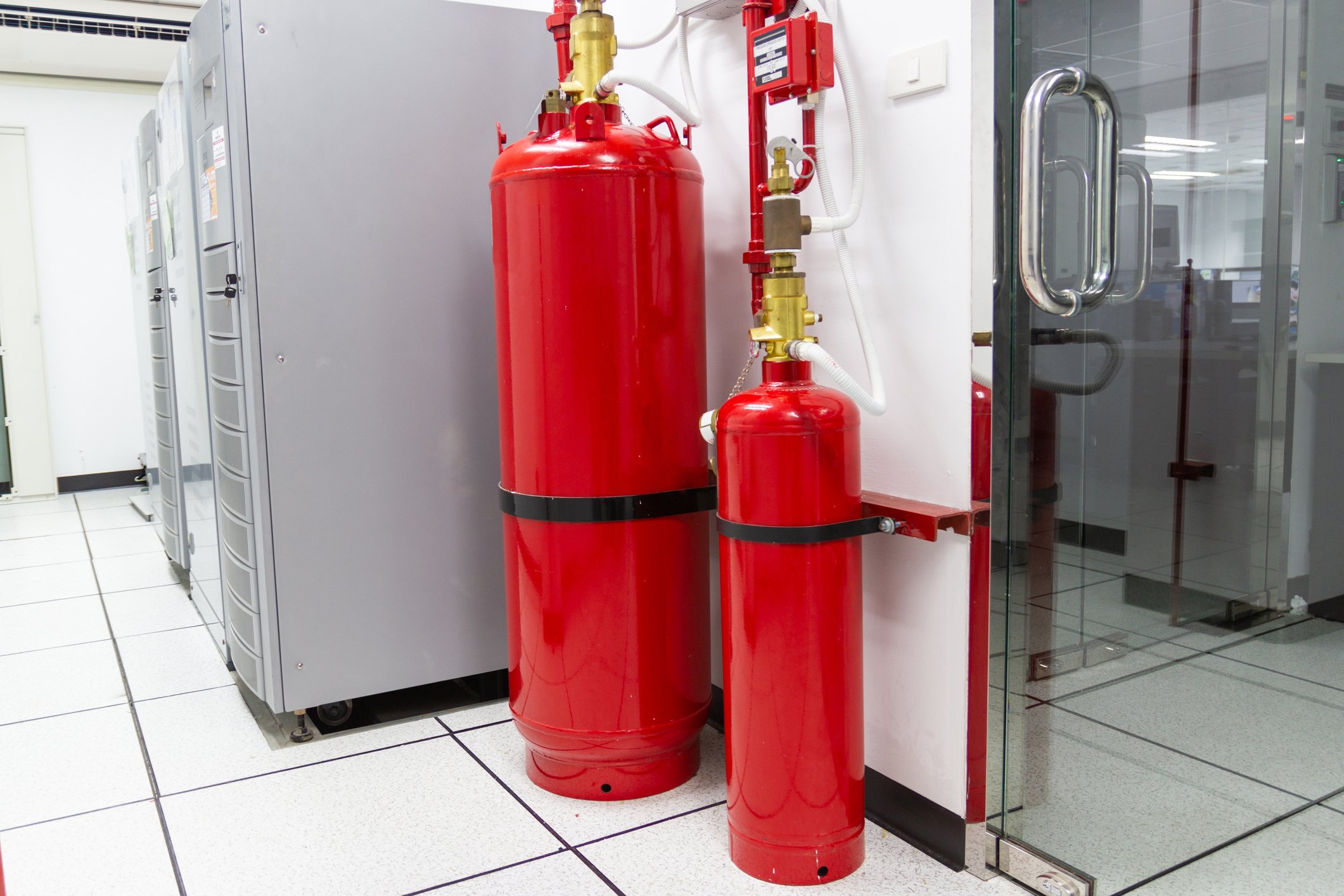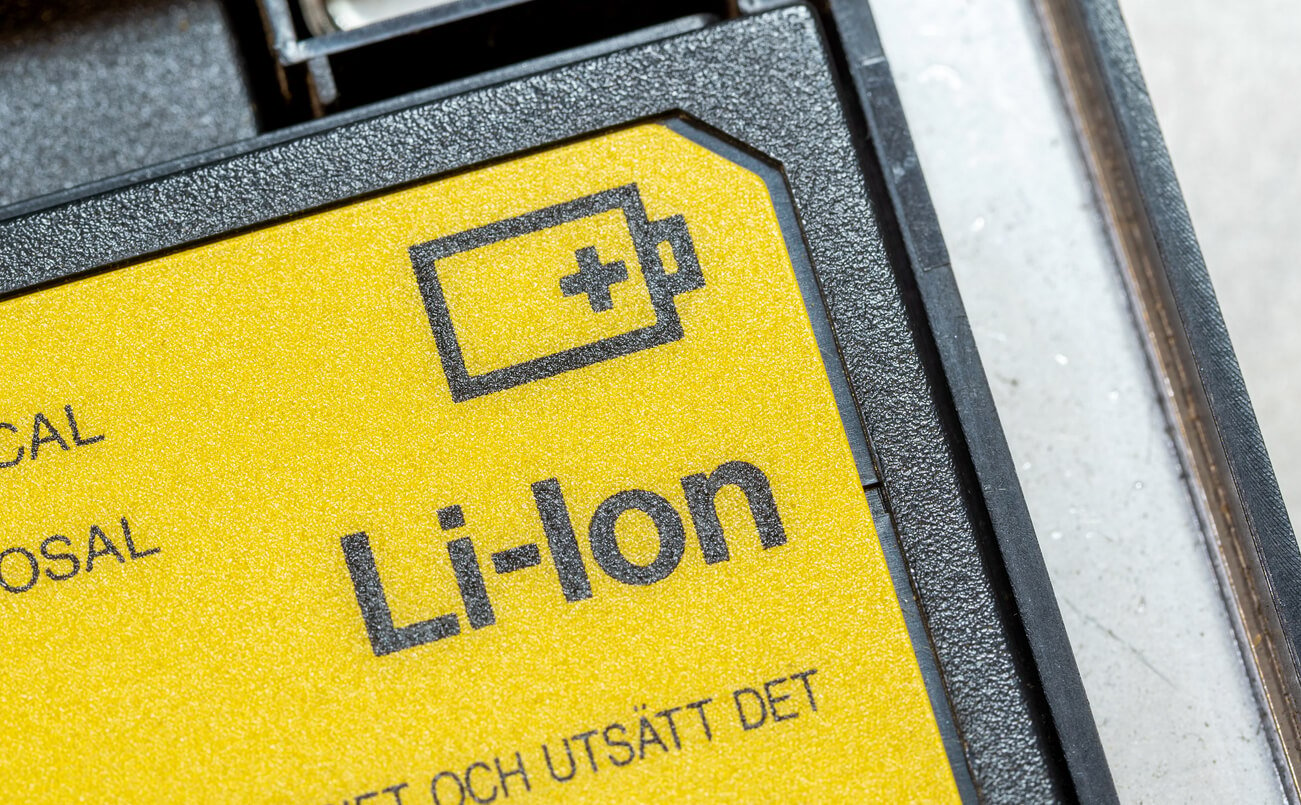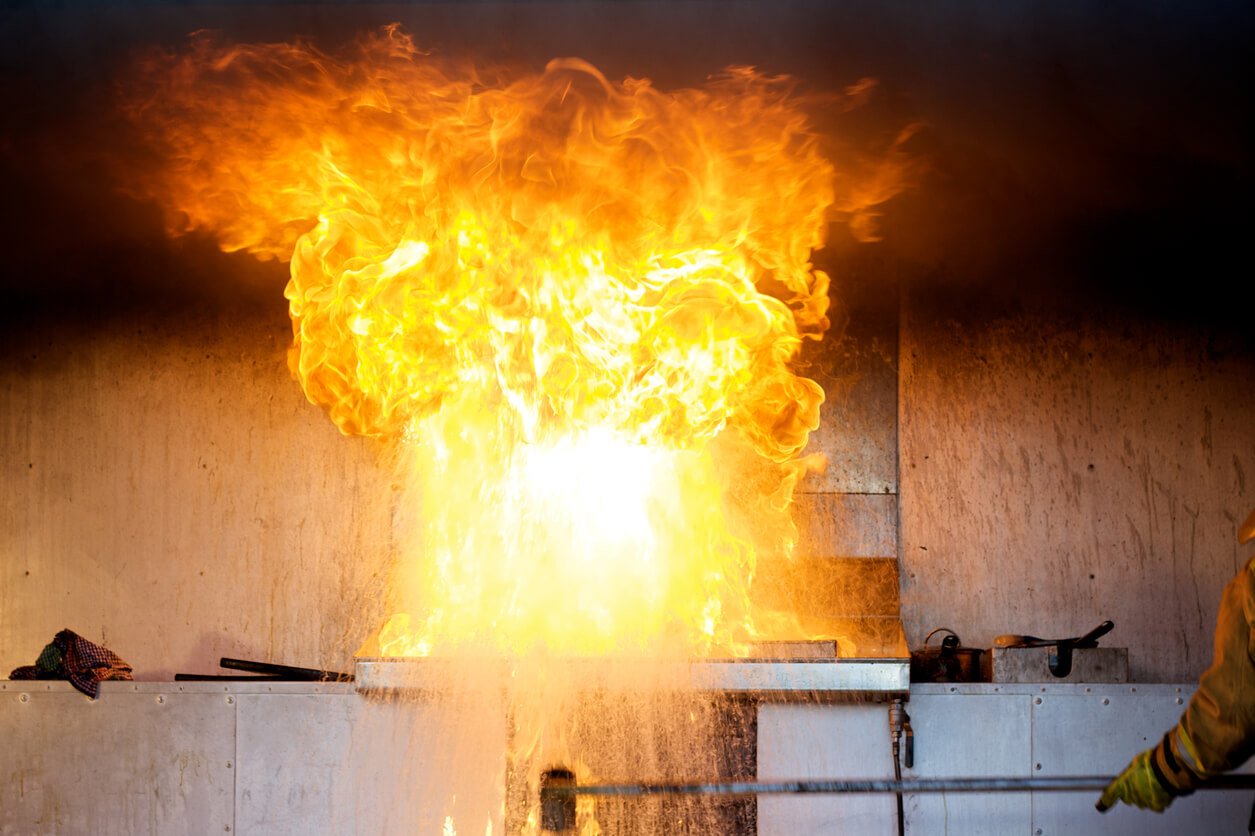Definition of Clean Agent Fire Suppression
Clean agent fire suppression, a safe gaseous agent, effectively puts out fires while minimizing harm to the occupied space and the people within it.Most buildings are equipped with fire safety systems including fire alarms, fire extinguishers, and fire sprinkler systems in order to protect lives and valuable assets. These fixtures are some of the most common fire alert and protection systems used in today's commercial facilities. However, some buildings require additional special hazard fire protection systems to properly protect the facility.
For example, the electronics in a large server room may or may not be damaged in a fire. However, they'll surely be damaged by water from the sprinkler system that goes off in response to the fire. Locations like server rooms, museums, libraries, storage vaults, and even gas stations require special hazard fire suppression systems to contain a potential fire without damaging valuable items.
Clean agent fire suppression systems are a safe, effective way to protect facilities that house expensive and delicate goods. Here's what companies must know when setting up clean agent systems.
How does Clean Agent Fire Suppression Work?
Clean agent fire suppression systems use a special gas known as an inert gas agent to put out fires. The gaseous agent is safe for both humans and the environment. The systems work to extinguish fires after they've been detected while minimizing harm to the occupied spaces that hold valuables.
The NFPA 2001 Standard on Clean Agent Fire Extinguishing Systems defines clean agents as electrically non-conductive, volatile, or gaseous fire extinguishing agents that do not leave a residue upon evaporation. Clean agent systems help extinguish fires in their incipient stages (when they have just started).
The Benefits of Clean Agent Fire Suppression Systems
Clean agent systems offer fast-acting suppression in the event of a fire. These systems can be dispersed and subsequently reach required concentration levels in just ten seconds. They are also designed with fire extinguishment in mind, whereas sprinklers and other safety measures focus on fire containment.
Clean agent fire suppression systems also leave minimal cleanup and residue. These systems offer chemical and gaseous fire suppression solutions that don't damage furniture or objects due to the chemical and gaseous makeup of the fire suppression solution.
Most importantly, clean agent fire suppression systems are human-safe. The clean agents these systems use have been approved by the U.S. Environmental Protection Agency for use in normally occupied spaces.
There are even different options to meet different needs. "Green" systems, for example, might be ideal for organizations trying to meet eco-friendly standards or prioritize environmentally friendly practices.
What Facilities Should Have Clean Agent Fire Suppression Systems Installed?
Clean fire suppression agents are necessary in any setting where water damage would severely destroy the items contained or stored in the room.
Some examples of facilities that commonly use clean agent fire suppression systems include:
- Laboratories with large volumes of technical equipment
- Medical facilities with important medications, supplies, and chemicals
- Spaces that house critical building infrastructure
- Buildings that rely on sensitive electronic equipment
- Government facilities that store physical records and sensitive documents
- Flammable liquid storage areas
- Museums with historic, high-valued artifacts
- Digital repositories and record repositories
- Telecommunication centers
- Data storage centers
- Libraries
If your facility houses valuable assets, clean agents can protect your organization not only from fires but also from harmful fire suppression methods. A clean agent fire suppression system also protects your facility from fire regardless of what's inside.
Clean Agent Fire Suppression System Inspections & Maintenance
Clean agent fire suppression systems are required to undergo regular inspections and maintenance. It's an integral part of ensuring the systems can help keep people and property safe. The inspection process for clean agent and carbon dioxide (CO2) systems involves:
- Check all initiating devices and verify time delays for system discharge
- Ensure releasing device activates properly
- Verify abort device and manual release are functioning
- Check the weight and/or pressure of agent containers
- Verify the orientation of all discharge, pipe fittings, and nozzles
- Perform enclosure integrity test
- Check batteries and signal
- Verify the as-built drawings and flow calculations
A clean agent fire suppression system is only as beneficial to safety as its current safety status. It's important to make sure these systems are well-maintained and inspected to promote ongoing functionality.
NFPA Maintenance Schedule for Fire Suppression Systems
With that in mind, according to the NFPA 2001 (updated 2022 edition), the maintenance schedule for a clean agent fire suppression system should be:
- Every 6 Months: Verify clean agent cylinder weight.
- Every Year: Test all clean agent system control panel equipment including initiating devices and equipment. Room integrity testing should also be performed.
- Every 5 Years: Inspect containers, reducing the likelihood of needing to perform a hydrostatic test.
NFPA Maintenance Schedule for Co2 Systems
According to the NFPA 12 (2022 edition), the maintenance schedule for a carbon dioxide system should involve:
- Every 6 Months: Verify the CO2 cylinder weight and pressure.
- Every Year: Test all components of the CO2 control panel including initiating devices and equipment as required by the NFPA 12 Standard on CO2 Fire Suppression Systems.
- Every 5 Years: Conduct a hydrostatic test if the cylinders holding clean agents have been previously emptied.
- Every 12 Years: Conduct a 12-year hydrostatic test if cylinders have never been emptied or the system has never discharged.
For more detailed guidance on proper inspection and maintenance of clean agent fire suppression systems based on each extinguishing agent, refer to the updated NFPA 2001 handbook.
Is a Clean Agent Fire Suppression System Right for Your Building?
The best clean agent fire suppression system for your unique application depends on various factors. Choosing the ideal system is a complex process that requires a thorough inspection of all system activities and facility operations. It's also important to consider cost, upgrades, eco-friendliness, and other similar aspects of a system during the decision-making stages.
To find the best clean agent system for your organization, get expert guidance from a professional fire protection company like Impact Fire. Our industry experts with you to determine which system is best for you and your facility's invaluable assets.
In addition to finding the right system for your building, we guide you through the products and services required to uphold fire safety and compliance. Impact Fire will help design a system to meet your building needs while also ensuring routine maintenance and repair when needed.
Contact the Impact Fire team today to discover clean agent fire suppression solutions for your organization.







